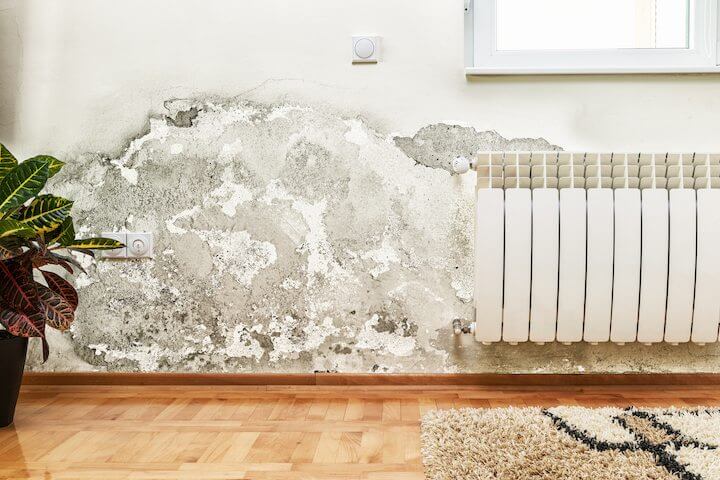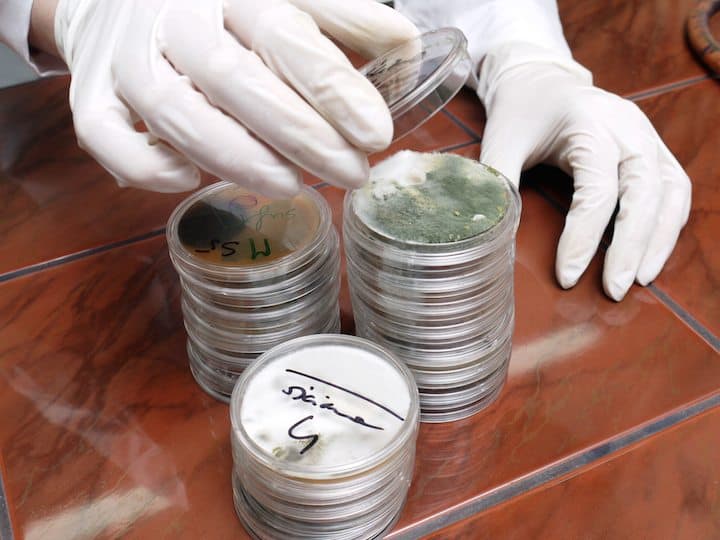Damp Buildings, Mold Testing and Occupant Health
Damp buildings, mold testing and occupant health are intertwined. We believe that the presence of water damage, dampness, visible mold, or mold odor indoors is indicative of an unhealthy environment. A thorough inspection by a qualified mold inspector is first priority. We do not recommend “mold testing” or using the presence of particular mold species to determine the level of health hazard or the need for remediation. We do recommend addressing water damage, dampness, visible mold, and mold odor by (a) identification and elimination of the unwanted source of water, (b) the rapid drying or removal of damaged materials, and (c) the careful and thorough cleaning or removal of mold and moldy materials, as rapidly and safely as possible, to protect the health and well-being of building occupants.
CDPH Statement Regarding Building Dampness, Mold and Health
Damp buildings, mold testing and occupant health are so frequently raised in public health circles, that the California Dept of Public Health (CDPH) has take a formal stand on the once-controversial subject. The following are edited excerpts from CDPH’s position statement:
Indoor dampness and mold (fungal growth) are common problems worldwide. To date, no clear state or federal policy has been issued on how to assess the health risks that dampness and mold pose to building occupants. In 2001, the Toxic Mold Protection Act (Senate Bill 732, Ortiz*) mandated that the CDPH determine the feasibility of setting Permissible Exposure Limits (PELs) for mold in indoor environments. In its 2005 report to the Legislature, CDPH concluded that “sound, science-based Permissible Exposure Levels (PELs) for indoor molds cannot be established at this time” and outlined the reasoning by which the department reached that conclusion.
While PELs remain elusive, mounting scientific evidence on dampness and mold, much of it published since 2005, supports an alternate, evidence-based approach to the assessment of health risks from indoor dampness and mold. Human health studies have led to a consensus among scientists and medical experts that the presence in buildings of (a) visible water damage, (b) damp materials, (c) visible mold, or (d) mold odor indicates an increased risk of respiratory disease for occupants. Known health risks include: the development of asthma, allergies, and respiratory infections, the triggering of asthma attacks, increased wheeze, cough, difficulty breathing, and other symptoms. Available information suggests that children are more sensitive to dampness and mold than adults. In addition, evidence is accumulating, although not yet conclusive, that the more extensive, widespread, or severe the water damage, dampness, visible mold, or mold odor, the greater the health risks.
There also is consensus that commonly utilized methods intended to quantify mold exposure, such as tape lift or spore trap sampling, do not reliably predict increased health risks. Therefore, the current practices for the collection, analysis, and interpretation of environmental samples for mold cannot be used to quantify health risks posed by dampness and mold in buildings or to guide health-based actions.
Finally, current consensus does not justify the differentiation of some molds (such as Stachybotrys species) as “toxic molds” that are especially hazardous to healthy individuals. The presence of molds such as Stachybotrys that grow only on very wet materials might be interpreted as demonstrating damp conditions that could place occupants at increased risk. However, the only types of evidence that have been related consistently to adverse health effects are the presence of current or past water damage, damp materials, visible mold, and mold odor, not the number or type of mold spores nor the presence of other markers of mold in indoor air or dust.
Background note: Building dampness degrades indoor environmental quality in many ways. Mold growth is perhaps the most common and noticeable result of excessive or chronic indoor dampness. Molds are fungi (as are mushrooms and yeasts). To grow and reproduce, molds need only moisture and nutrients. As nutrients are almost always available from organic material (e.g., leaves, wood, paper, and dirt), the presence or lack of moisture generally is what allows or limits mold growth. In addition to mold, indoor dampness can support bacterial growth and contribute to infestations of house dust mites, cockroaches, and rodents, which also pose health risks for building occupants. Moisture may also alter the chemistry of damp materials. Hence, while excessive or chronic dampness is not by itself a cause of ill health, it may indicate or increase other exposures that do have adverse health effects.
AIHA’s Position Statement on Mold and Dampness in the Built Environment
Damp buildings, mold testing and occupant health are central to industrial hygiene. The American Industrial Hygiene Association (AIHA) formulated the following “position statement on mold and dampness in the built environment,” in 2013:
- While the design and location of a building have the greatest impact on the onset of serious mold damage, maintenance and effective management of mold and dampness requires an ongoing strategy involving occupants, building owners and managers, ventilation experts and occupational hygiene professionals.
- It has long been recognized that, based on the application of existing methods to analyze air or dust samples, there are no quantitative, health-based microbial exposure guidelines or thresholds. Sampling data that may be developed during an investigation must be comprehensive and communicated in a form useful to physicians and allied professionals, building occupants and decision makers.
- Investigation and remediation of mold and moisture damage in buildings must be based on an informed inspection augmented by the judicious use of existing sampling methods, primarily for the purpose of detecting any hidden damage. The protection of remediation workers and occupants during renovations is essential. In case of occupants with more serious pre-existing respiratory conditions, relocation may be appropriate.
- It is not unusual for buildings to have a number of concurrent problems that affect Indoor Environmental Quality (IEQ) or the perception of IEQ. Water and moisture damage can result in the release of gasses from some building materials. Investigations of apparent or suspected mold-related health complaints must consider all possibilities. While mold damage comprises a large percentage of problem situations, studies of occupant complaints find that a high percentage have an outdoor air make up below the American Society for Heating, Refrigeration, and Air-Conditioning Engineers (ASHRAE) standard, inappropriate and inadequate temperature and humidity levels, inadequate control of contaminants from outdoor air (including ozone, traffic pollutants, etc.), contaminants arising from equipment or activities within the building or house (including cooking activities), and poor air distribution.
Does Mold Testing Ever Make Sense?
There are occasions when mold testing does make sense. Common examples include determining if various spaces within a building should be considered Condition 1, 2 or 3, connecting a source of mold to a particular exposure, and verifying mold remediation has been successfully executed to industry approved standards of cleanliness (aka: “mold clearance testing”). Mold testing should always be done in accordance to industry standards. Mold testing in the absence of an inspection is never recommended, and indiscriminate testing may provide unhelpful data.
Mold testing is one tool in an environmental inspector’s toolkit but a mold inspector should begin with occupant surveys and a thorough environmental inspection prior to mold testing.


